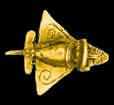
Originally Posted by
Longeyes

No way to get notifications of posts.
Chris Cooper's claim to get there in 2 days refers to his Space Drive technology not conventional tech. As he says NASA missions use solid fuel, they rely on ejecting that matter at velocity to reach escape velocity from the earth. They then rely on solar power or nuclear power to power to unit, it is too costly to produce proper thrust after leaving earth orbit. The space drive pushes against the 'quantum field' I assume it will accelerate half way to Mars then decelerate closer to Mars. Cold fusion is essentially converting mass directly into energy just like the sun, e=mc2, so for a tiny amount of deuterium can produce a vast amount of energy, if slowly. It the best storage medium there is (mass) It depends on him using cold fusion to power his Space Drive two big unknowns.




 Reply With Quote
Reply With Quote

